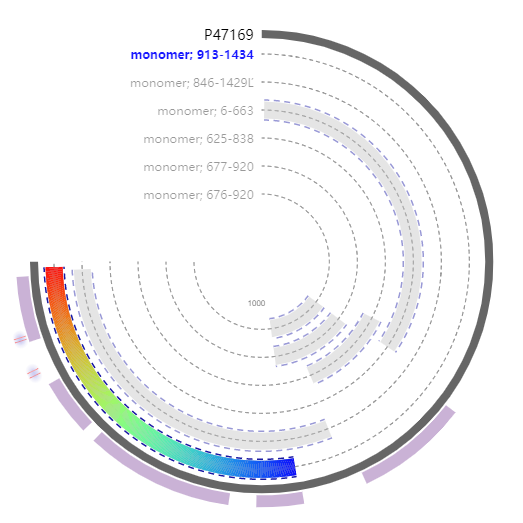Catalyzes the reduction of sulfite to sulfide, one of several activities required for the biosynthesis of L-cysteine from sulfate. 3 H2O + hydrogen sulfide + 3 NADP+ = 4 H+ + 3 NADPH + sulfite.
MTASDLLTLPQLLAQYSSSAPQNKVFYTTSTKNSHSSFKGLESVATDATHLLNNQDPLNT
IKDQLSKDILTTVFTDETTLVKSIHHLYSLPNKLPLVITVDLNLQDYSAIPALKDLSFPI
LISSDLQTAISNADSSYKIATSSLTPVFHFLNLEKIGTSTAIEQDIDFPTLEIANEETKV
ALSEATDSLTNFELVKGKESITTVIVNLSPYDAEFSSVLPSNVGLIKIRVYRPWNFSKFL
EILPSSVTKIAVLQGVSKKSQSNEFQPFLLDFFGNFNELVSRNIEQVVLTNIGNVNDYGN
VINTVISNINKKEPDNNLFLGESNEKAEEQAEVTQLISSVKKVVNLEDAYIKVLKQLFSS
NLQILNQFSSETIEPSNPEFGFGRFLKQEAQREELISLAKTSLDPSLYLSEDANKIVQLL
SKWLSFNGRDLDEAQLQEANATGLEIFQLLQSNQDSSTVLKFLKIAPTSDSFIFKSSWLI
GSDAWSYDLGHSGIQQVLSSRKNINVLLIDSEPYDHRKQNQDRKKDVGLYAMNYYSAYVA
SVAVYASYTQLLTAIIEASKYNGPSIVLAYLPYNSENDTPLEVLKETKNAVESGYWPLYR
FNPVYDDPSTDKEAFSLDSSVIRKQLQDFLDRENKLTLLTRKDPSLSRNLKQSAGDALTR
KQEKRSKAAFDQLLEGLSGPPLHVYYASDGGNAANLAKRLAARASARGLKATVLSMDDII
LEELPGEENVVFITSTAGQGEFPQDGKSFWEALKNDTDLDLASLNVAVFGLGDSEYWPRK
EDKHYFNKPSQDLFKRLELLSAKALIPLGLGDDQDADGFQTAYSEWEPKLWEALGVSGAA
VDDEPKPVTNEDIKRESNFLRGTISENLKDTSSGGVTHANEQLMKFHGIYTQDDRDIREI
RKSQGLEPYYMFMARARLPGGKTTPQQWLALDHLSDTSGNGTLKLTTRATFQIHGVLKKN
LKHTLRGMNAVLMDTLAAAGDVNRNVMVSALPTNAKVHQQIADMGKLISDHFLPKTTAYH
EVWLEGPEEQDDDPSWPSIFENRKDGPRKKKTLVSGNALVDIEPIYGPTYLPRKFKFNIA
VPPYNDVDVLSIDVGLVAIVNPETQIVEGYNVFVGGGMGTTHNNKKTYPRLGSCLGFVKT
EDIIPPLEGIVIVQRDHGDRKDRKHARLKYTVDDMGVEGFKQKVEEYWGKKFEPERPFEF
KSNIDYFGWIKDETGLNHFTAFIENGRVEDTPDLPQKTGIRKVAEYMLKTNSGHFRLTGN
QHLVISNITDEHVAGIKSILKTYKLDNTDFSGLRLSSSSCVGLPTCGLAFAESERFLPDI
ITQLEDCLEEYGLRHDSIIMRMTGCPNGCSRPWLGELALVGKAPHTYNLMLGGGYLGQRL
NKLYKANVKDEEIVDYIKPLFKRYALEREEGEHFGDFCIRVGIIKPTTEGKYFHEDVSED
AY1466

| PMID | Title & Author | Abstract | Year | |
| 0 | 19236486 | Isolation of sulfite reductase variants of a commercial wine yeast with significantly reduced hydrogen sulfide production.Antonio G Cordente , Anthony Heinrich, Isak S Pretorius, Jan H Swiegers | The production of hydrogen sulfide (H(2)S) during fermentation is a common and significant problem in the global wine industry as it imparts undesirable off-flavors at low concentrations. The yeast Saccharomyces cerevisiae plays a crucial role in the production of volatile sulfur compounds in wine. In this respect, H(2)S is a necessary intermediate in the assimilation of sulfur by yeast through the sulfate reduction sequence with the key enzyme being sulfite reductase. In this study, we used a classical mutagenesis method to develop and isolate a series of strains, derived from a commercial diploid wine yeast (PDM), which showed a drastic reduction in H(2)S production in both synthetic and grape juice fermentations. Specific mutations in the MET10 and MET5 genes, which encode the catalytic alpha- and beta-subunits of the sulfite reductase enzyme, respectively, were identified in six of the isolated strains. Fermentations with these strains indicated that, in comparison with the parent strain, H(2)S production was reduced by 50-99%, depending on the strain. Further analysis of the wines made with the selected strains indicated that basic chemical parameters were similar to the parent strain except for total sulfite production, which was much higher in some of the mutant strains. | 2009 |
| 1 | 32508800 | Population Kinetics and Mechanistic Aspects of Saccharomyces cerevisiae Growth in Relation to Selenium Sulfide Nanoparticle Synthesis.Farnoush Asghari-Paskiabi, Mohammad Imani , Sana Eybpoosh , Hashem Rafii-Tabar , Mehdi Razzaghi-Abyaneh | Biosynthesis of nanoparticles (NPs) by microorganisms is a cost- and energy-effective approach. However, how the production of NPs affects the population of producing organism remains as an unresolved question. The present study aimed to evaluate the kinetics of Saccharomyces cerevisiae growth in relation to synthesis of selenium sulfide nanoparticles by using a population model. To this end, the population of S. cerevisiae cells was investigated in terms of colony forming units (CFU) in the presence of the substrate in different time points. Fluctuation of sulfite reductase (SiR) activity, expression of MET5 and MET10 genes, and concentrations of sulfite and selenium were evaluated to support the population findings. CFU values in the test groups were lower than those in the control counterparts. The rise and fall of the SiR activity and MET5 and MET10 gene expression conformed to the variations of CFU values. The rate of reduction in the selenium and sulfite concentrations tended to decrease over the time. In conclusion, the cells population was negatively and positively affected by selenium and sulfite concentrations, respectively. The indirect relationship of the selenium ions concentration in the path analysis revealed that the product, selenium sulfide nanoparticles, caused this drop in S. cerevisiae cells population. | 2020 |
| 2 | 1479340 | Physiological analysis of mutants of Saccharomyces cerevisiae impaired in sulphate assimilation.D Thomas , R Barbey, D Henry, Y Surdin-Kerjan | The assimilation of sulphate in Saccharomyces cerevisiae, comprising the reduction of sulphate to sulphide and the incorporation of the sulphur atom into a four-carbon chain, requires the integrity of 13 different genes. To date, the functions of nine of these genes are still not clearly established. A set of strains, each bearing a mutation in one MET gene, was studied. Phenotypic studies and enzyme determinations showed that the products of at least five genes are needed for the synthesis of an enzymically active sulphite reductase. These genes are MET1, MET5, MET8, MET10 and MET20. Wild-type strains of S. cerevisiae can use organic metabolites such as homocysteine, cysteine, methionine and S-adenosylmethionine as sulphur sources. They are also able to use inorganic sulphur sources such as sulphate, sulphite, sulphide or thiosulphate. Here we show that both of the two sulphur atoms of thiosulphate are used by S. cerevisiae. Thiosulphate is cleaved into sulphite and sulphide prior to utilization by the sulphate assimilation pathway, as the metabolism of one sulphur atom from thiosulphate requires the presence of an active sulphite reductase. | 1992 |
Choi., K.-M., S. Kim., and S. Kim., Sulfate assimilation regulates hydrogen sulfide production independent of lifespan and reactive oxygen species under methionine restriction condition in yeast. www.aging-us.com 2019. 12.